By Eric Niderost
On April 26, 1607, three small English ships arrived at the mouth of the Chesapeake Bay after a grueling and contentious four-month voyage. Susan Constant was the largest vessel of the trio, some 100 tons, followed by Godspeed (40 tons) and the pinnace Discovery (20 tons). They were small by European standards—even the Mayflower would be 180 tons—and every inch was crammed with men and supplies. There were 104 men and boys in this expedition whose objective was to establish an English colony in the New World.
The project was financed by the Virginia Company of London, a group of well-to-do merchants and nobles who expected to see a healthy return on their investments. Virginia was surely a terrestrial paradise, a storehouse of unlimited wealth just waiting to be exploited. There were stands of timber and other natural resources. But most of all, company stockholders hoped the colonists would find precious metals such as gold. Over a century of European exploration had not dimmed hopes that America was really the gateway to Asia. The expedition was to try and find a route to the “South Sea” (Pacific Ocean) and a path to the riches of China and India.
Company officials were not unmindful of the dangers involved in such an enterprise. Spain considered North America its private domain, to be jealously guarded against outside European encroachment. England and Spain had been bitter rivals for decades; in fact, an open war had broken out in 1588 that had only ended in 1604. Company instructions were precise; the colonists were to build a fort at least a hundred miles inland to avoid the possibility of a Spanish surprise attack.
There was also the problem of the American Indians, called “the naturals” in company documents. The colonists were strictly enjoined not to “offend the naturals”; this was not just advice, but the cornerstone of company policy. The site chosen for the colony was to have no native inhabitants, thus to avoid unnecessary friction. This was a commercial venture, and war is costly in blood and treasure. Quite apart from any other considerations, there was also a vague—and it turned out, largely vain—hope that the local Indians might be converted to Christianity and become Anglicans.
The first landfall was named “Cape Henry” by the weary travelers, and soon after a landing party was organized to go ashore. After four months of cramped conditions on board, there was no lack of volunteers for the mission. Captains Christopher Newport and Gabriel Archer led about 30 men ashore; the English “ravished” at the sight of bubbling streams and towering trees.
But there was soon trouble in this paradise. After a day of exploring, stretching their legs, and generally enjoying themselves, the English decided to go back to the ships at nightfall. But before they could leave, Indians creeping up “on all fours, from the hills like bears” suddenly attacked. The natives peppered the newcomers with arrows, wounding Captain Archer in the hand and injuring a sailor named Matthew Morton “very dangerously.” The attack was blunted by a scattering of musket shot, the Indians covering their retreat with a defiant chorus of shouts.
The English were shaken by this encounter, but soon had other things to occupy their minds. A sealed box was opened that contained the names of the men chosen to be the resident council. This council would have supreme authority locally, but would be subordinate to company officials in London.
After the names were read out, 47-year-old Edward Maria Wingfield was chosen to be president. Wingfield was a pompous, overbearing man whose pedigree masked a basic lack of imagination and stolid incompetence. He had been one of the founders of the Virginia Company, a man with connections at court, and he intended to follow instructions to the letter.
It was decided to send an exploring party up the unknown river the English dubbed the James in honor of their king. A shallop—a sloop-rigged boat that could be rowed and carry a crew of about 20—would be used for this purpose. Shoals, snags, or even rapids might lie ahead, and the shallow-draught shallop was ideally suited to explore unknown waters.
The shallop party probed upriver, marveling at the thick, green forests that spiked the sky, the meadows garlanded by wildflowers, and the abundance of wildlife. The explorers stopped at Indian villages along the way, where they were cordially received. There was a site along the north shore of the James River that seemed a promising location for a colony. Quickly christened “Archer’s Hope” by the exploring party, the location had good timber for building materials and plenty of wild game, but it lacked a crucial ingredient: ships could not anchor near shore.
The search continued until finally a site was found that seemed to meet all the colonists’ needs. There was a pear-shaped peninsula about two miles long and about a mile wide that seemed particularly inviting. Its natural “moat” was ideal for defense, and on the river side the water was six fathoms deep. That meant ships could literally dock right alongside the peninsula, unloading goods without the need of shuttling lighters. Ships didn’t even have to use their anchors, but simply tie their gently swaying vessels to trees. It was here that Jamestown, the first permanent English settlement in America, was founded.
Then, for the first time, the settlers began to ignore their written instructions. The Virginia Company directive specifically forbade the colonists to reside “in a low and moist place, because [it] will prove unhealthful.” The words proved prophetic. Jamestown peninsula was low-lying and marshy, though its defensive qualities seemed paramount at the time. The marshes bred mosquitoes, and there was no immediate source of fresh water. The colonists could—and did—drink river water, but the James is partly salt at this location.
Perhaps the English were fooled by a bountiful nature bursting with the glories of spring. George Percy left a written account of these early days that gives some inkling as to the colony’s overall frame of mind. Percy was an aristocrat, brother to the Earl of Northumberland, but the latter had been implicated in some political intrigue and was a prisoner in the Tower of London. Under the circumstances, it was better for a younger son to seek his fortune abroad than to risk arrest in England.
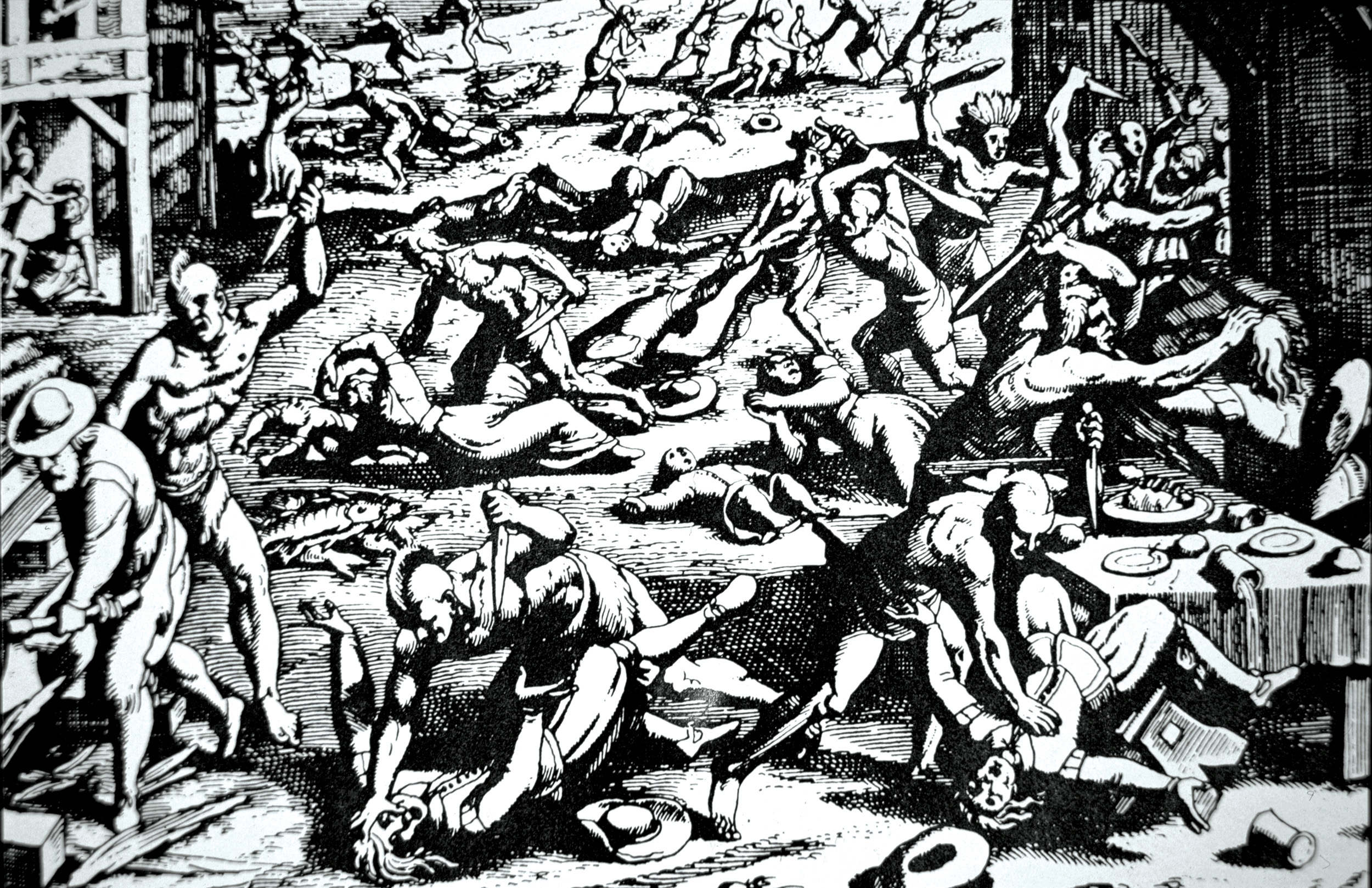
Percy writes time and again of large, wild strawberries, of paths festooned with wildflowers, the very air redolent with the fragrant scent of pine. But as spring turned to summer, the humid heat and malaria-carrying mosquitoes were to take their toll. Even more importantly, though, these pine groves and cypress swamps were owned by a native Indian tribe. Jamestown and its immediate environs were in Paspehegh territory where the natives didn’t take kindly to an invasion of their hunting grounds.
A couple of weeks earlier the English had reached the principal Paspehegh village upstream near the confluence of the James and the Chickahominy Rivers. The first meeting had been friendly enough, the strangers being entertained and harangued with long speeches of apparent welcome. But how long the natives’ goodwill would last—especially when the English chose to settle on their hunting grounds—remained to be seen.
Cultural misunderstandings made a confrontation almost inevitable. Jamestown peninsula seemed uninhabited, but apparently a village had been located there some years earlier. It was the Indian custom to move villages after a time, to let surrounding cornfields lie fallow and gain fresh nutrients. Eventually, the natives would probably have returned—but now, these white-skinned foreigners were occupying the site.
President Wingfield seemed blissfully unaware of the gathering storm. A chronicler later recalled Wingfield “would admit no exercise of arms, or fortification” of Jamestown. Building a fort might “offend the naturals” and divert the colony from its main mission—the exploitation of natural resources for profit. The Indians had to be reassured of the colonists’ pacific intentions, so no drill or “exercise of arms” would be admitted. Wingfield reluctantly approved the construction of a flimsy bulwark of felled trees and boughs in the form of a “half moon.” “Now falleth every man to work,” a colonist remembered. Trees were felled, the woods ringing with the sound of chopping axes. But the timber was being cut to provide open spaces for tents, not to build a fort or substantial housing. Others were busy making clapboard for export to England.
There was one man among the colonists who thought this was the height of folly. Captain John Smith was a soldier of fortune who had packed a lifetime of adventures into his 27 years. He was boastful, touchy, impatient, but also bluff, courageous, and honest. He had campaigned in Hungary in the service of Austria, been captured, and sold as a Turkish slave. After a series of hair-raising adventures he escaped and was back in England in time to join the Virginia expedition.
Smith was by habit and inclination a soldier, and he saw the relations between the Indians and the English in military terms. The doughty little captain felt that any English settlement in America could be secure only if it was strong militarily. He welcomed peaceful trade—he did not blindly hate Native Americans—but felt such trade could be safely conducted only from a position of strength. Wingfield did not share Smith’s opinions, even though he was an experienced soldier who had served in the Netherlands.
Smith was the son of a yeoman farmer. But he was a man who—in the context of the times—didn’t know his “place.” It was a deferential age, and Smith had the unfortunate habit of speaking his mind. It was a trait that often got him into trouble with his “betters.” Wingfield and Smith locked horns during the Atlantic crossing, until finally Smith was accused of mutiny. Even George Percy, who didn’t much care for Smith, admits the charges were false. Smith was arrested, clapped in irons, and threatened with hanging.
When the sealed box was opened, Smith was named as one of the council members, much to Wingfield’s consternation. The president used his influence to deny Smith a seat on the council, but at least the captain had avoided execution. Smith was released but not exonerated, and was still under a cloud when the colonists landed at Jamestown on May 13. He was under suspicion, but was allowed to accompany a scouting expedition up the James River.
In Smith’s absence the colony had a near brush with disaster. On May 18 Wowinchopunk, the Werowance (chief) of the Paspehegh, paid a visit to Jamestown accompanied by a hundred armed warriors. The English were wary of this “king,” especially when he indicated through sign language that he wanted them to store their arms away. The Indians were on average taller than the English, their well-muscled, bare torsos daubed with a variety of colors. Skin aprons girded their loins, and most were armed with bows and quivers of arrows.
The Indians were allowed to freely roam around the brushwood fort, a flimsy affair much weaker than the pole stockades that protected their villages. When one of the warriors tried to take a metal hatchet, its owner objected and a scuffle ensued. The Englishman managed to retrieve his property, hitting the thief in the process. Another warrior advanced with a wooden club, seeking to defend his tribesman. It was a signal for all the English to reach for their swords and matchlock muskets.
For a long moment the two sides eyed each other, but after what must have seemed like an eternity Wowinchopunk broke the spell by leading his warriors out of the fort. The Werowance was beside himself with anger, and secretly schemed to wipe out the invaders once and for all. But he was ready to bide his time and wait for a more favorable opportunity.
On May 26 the Paspehegh struck Jamestown in full force. Indian warriors launched clouds of arrows into the fort, then rushed the main gate. If the Paspehegh managed to gain entry, odds were the English would be wiped out to a man. The colonists had some armor, including breastplates, backplates, and a variety of helmets, but such protection took time to strap on. In the emergency they probably only had time to grab a helmet, and perhaps a target (shield).
Little specific detail is given, but it was a desperate affair, a “very furious assault” by hundreds of screaming Indians. Wingfield and his companions probably had swords and targets, supported by colonists armed with matchlock muskets. The matchlock was a notoriously inaccurate weapon; in drill, the command would be “present,” not “aim,” because aiming at a target was an impossibility. Nevertheless, at close range and against large masses of Indians, musket fire could be deadly.
Warriors were at a disadvantage when dealing with English swordsmen at such close quarters. Some Indians had wooden shields, but such things were no protection against cold steel. Muskets spat out a steady stream of lead, but it was the ships offshore that finally turned the tide after heavy fighting.
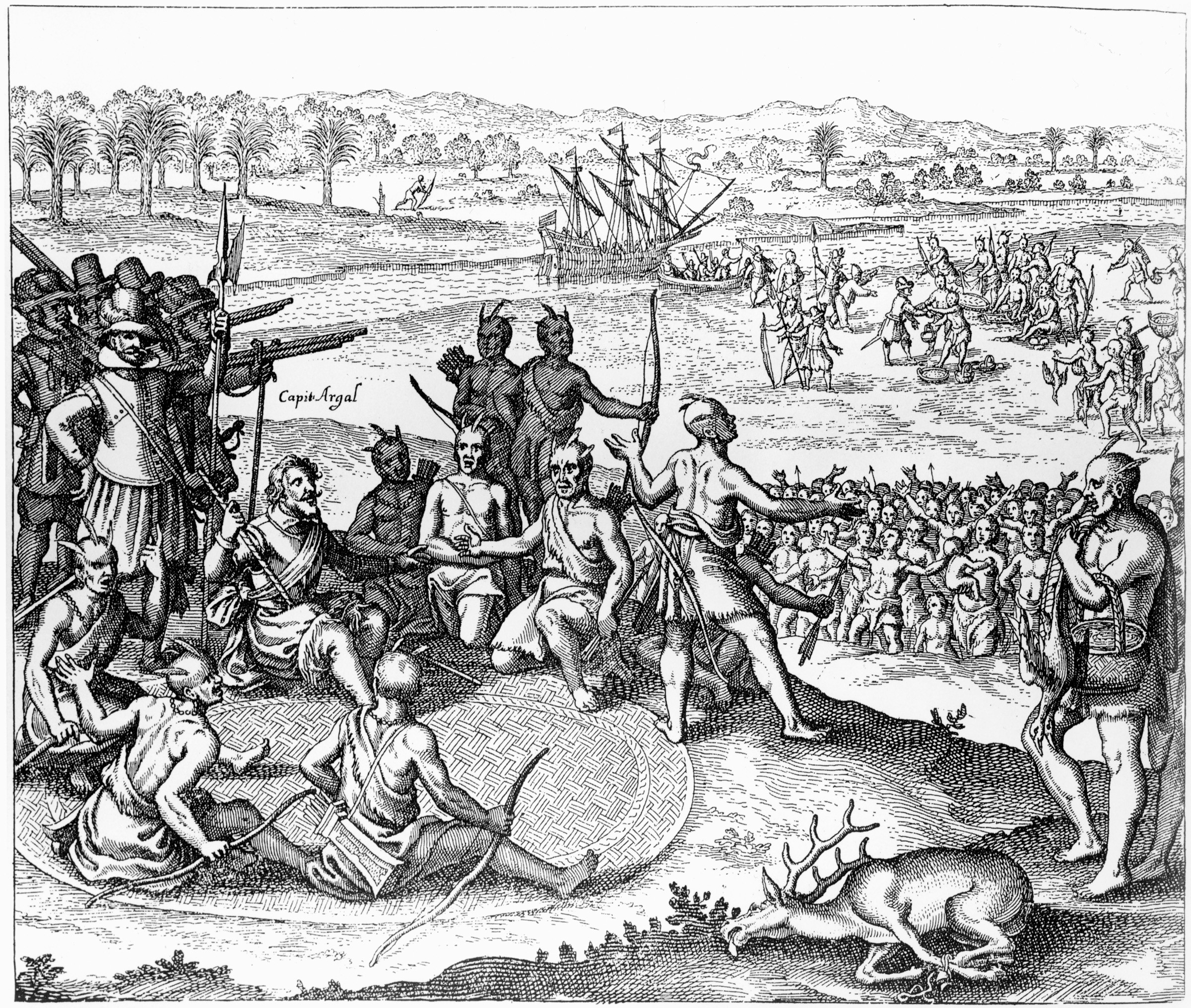
Susan Constant, Discovery, and Godspeed began to fire their cannon, the booming reports echoing through the forest like a series of terrible thunderclaps. The noise and the smoke were almost as bad as the casualties the cannon produced. Even misses were terrifying to the natives—suddenly small trees would splinter and small branches fall in a flurry of leaves and other detritus. The Indians retreated after a fight that “indured hott about an hower” (endured hot about an hour).
One boy had been killed and 14 others wounded. The fort was in a shambles, but Edward Wingfield emerged from the fracas a sadder but wiser man. He was largely responsible for this near catastrophe, but he had redeemed himself by showing “himselfe a valiant Gentleman” during the fight at the gates. Wingfield had nearly paid for his mistakes with his life, because an arrow “shott cleane through his bearde.”
After this literal close shave, Wingfield saw the light. John Smith took no pleasure in being proved right, but could not resist a dry comment. “Hereupon the President,” he later wrote, “was contented the fort be palisadoed [palisaded], the ordnance mounted, his men armed and exercised.”
Once again the woods rang with the sound of axes as laborers felled the trees needed to build a fort. Social class was important in 17th-century England, and far too many of the colonists were upper-class “gentlemen” from England’s ruling gentry. As “gentlemen” they refused to do manual labor, preferring to leave such distasteful tasks to the “lesser sort.” Such attitudes were bound to hamper progress, but this was not immediately apparent in the early weeks.
Long thought to have been washed away into the James River, James Fort has been rediscovered by an archaeological team headed by Dr. William Kelso. The Jamestown Rediscovery Project has uncovered enough remains to suggest the fort was well planned and constructed. Early colonist George Percy describes James Fort as being “triangle-wise” in shape, with “three bulwarks at every corner like a half moon, and four or five pieces of artillery mounted in them.”
Modern excavation has added further detail. One of the first areas to be uncovered was the southeast “bulwark,” which not only showed traces of the round wooden bastion, but also of a dry moat. A number of storehouses and other small buildings were erected inside the fort’s 13/4-acre interior. At this stage most of the colonists lived in tents or fashioned crude lean-tos. By contrast, the typical fort building had a wooden framework whose interior walls were made of wattle and daub. A latticework of branches would be covered over with clay or mud. It was a style that dated back to the Middle Ages—and was also unsuitable for Virginia’s humid, subtropical climate.
It was during this period that the English became acquainted with woodland Indian warfare. The May 26 attack had been the exception; generally the natives avoided direct confrontation. Ambush was their favorite tactic, called “ambuscado” in 17th-century English. Harassment was the order of the day, designed to whittle down an enemy’s strength and keep him off balance.
The tall grass that grew around the fort’s outside perimeter provided ideal cover for the Indians. Ironically, a friendly native had pointed this out, advising the colonists to “cutt downe the long weedes rounde about our forte.” Even Virginia Company officials in London had foreseen this problem, ordering the colonists to maintain a clear field of fire around the settlement. This counsel was ignored, with terrible consequences.
Indians would fire arrows at random, aiming high so that the missiles sailed over the fort palisade. Such sniping was bound to be literally hit or miss; on one day alone a colonist counted 40 arrows thudding into the settlement, but the feathered barrage only killed one of the colony’s “dogges.”
Other days the colonists were not so lucky. Eustace Cloval was one of Jamestown’s many “gentlemen,” overconfident and unwary. On Sunday, May 30, 1607, he was walking alone outside the fort when some Indians shot him with a barrage of arrows. Punctured by six lethal shafts, covered in blood, Cloval managed to stagger back to James Fort to raise the alarm. “Arme! Arme!” he cried with blood-flecked lips, but by the time the settlers managed to organize a pursuit and flush the woods, their elusive quarry was gone.
Sometimes the Indians would lead the colonists on a merry chase, picking off stragglers when pursuers became separated along the line of march. Captain John Smith relates that “our men by their disorderly straggling were often hurt when the savages by their nimbleness of their heels escaped.” It got to the point to where even answering nature’s call was fraught with danger. One dawn an Englishman who went out to “doe naturall necessity” was set upon and killed.
The fort was completed by June 15, giving the hard-pressed English a measure of security. Captain Newport sailed back to England a few days later, promising to return with fresh supplies in about “twenty weeks’” time. The tiny colony was truly on its own, cut off from England and dependent on ship supplies and Indian trade for sustenance.
Percy mentions in his writings that the settlers did grow their own corn, with stalks that “sprang to a man’s height from the ground.” But apparently not enough attention had been devoted to making the colony self-sufficient for the coming months. Worse still, there were no “husbandmen” (farmers) among the settlers. The gentlemen did not want to soil their hands, and the laborers were mainly craftsmen such as carpenters who knew nothing about tilling the land.
As the months went by the Englishmen found themselves in the suffocating grip of a humid Virginia summer. Rations grew scanty, until the men were living off wheat or barley that had been originally stored in the ship’s hold so long “it contained as many worms as grains.” Malnutrition weakened the colonists, and the situation was made worse by the debilitating summer heat. The settlers began to die of “cruel diseases” that included “swellings, fluxes, burning fevers,” and “mere famine.”
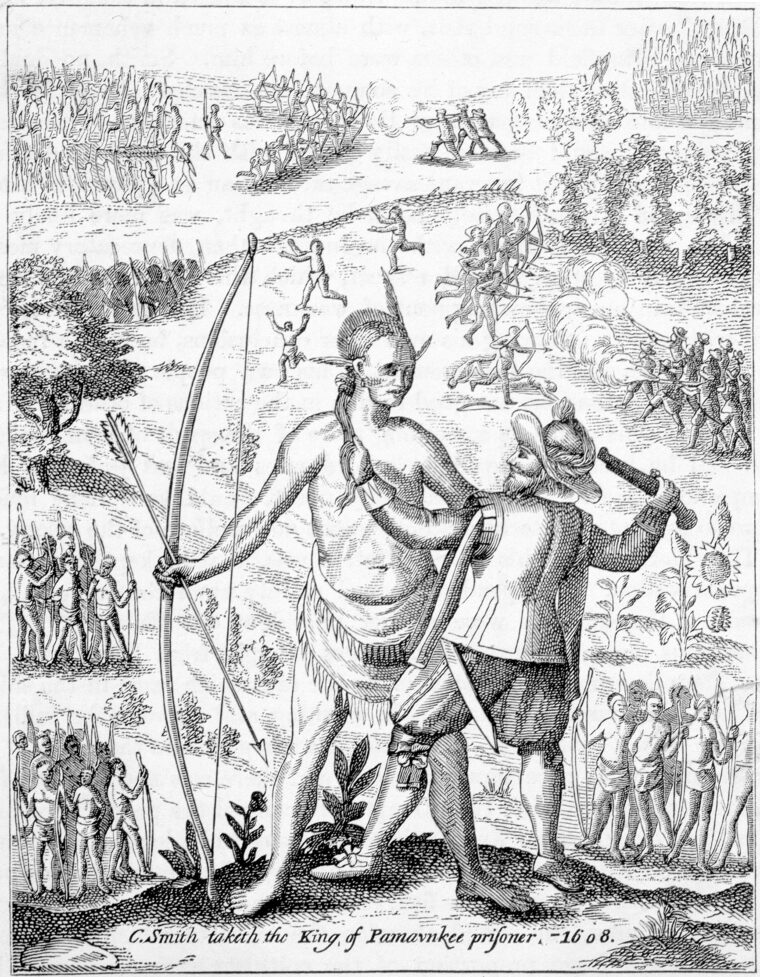
For the next three or four months survivors supplemented their meager diet with sturgeon and sea crab, which were plentiful. But by fall, the sturgeon disappeared, raising the specter of famine once again. The Indians continued their semi-siege, picking off those who were careless—or desperate with hunger—to venture out of the fort alone. Wingfield was eventually deposed as president—it was said he had been hoarding wine and other provisions for himself and his supporters—and the internal squabbling continued. Beset by troubles from without and within, Jamestown seemed doomed to failure.
Then, in the midst of despair, a sudden miracle: The “savages” ended their siege and came to the fort with “plenty of fruits and provisions.” What caused this sudden change of heart? Apparently it was the express orders of Powhatan, Mamanatowick (supreme chief) of this part of Virginia, a man who ruled over a confederation of over 30 Algonkian-speaking tribes. The troublesome Paspehegh Indians were part of this empire, and when Powhatan ordered them to cease hostilities they obeyed at once.
Powhatan was a man of about 60 who had been ruling Tidewater Virginia since the 1570s. He was an experienced leader, intelligent, devious, and every bit as unscrupulous as his European counterparts. A master politician, he headed a confederation that was in the process of expansion when the English arrived. Actually, “Powhatan” was the name of one of his towns. His real name was Wahunsonacock. By the time Jamestown was founded, Powhatan ruled over some 9,000 people, of whom about 2,500 or 3,000 were warriors. His home tribe was the Pamunky, over whom his brother Opechancanough held sway.
Europeans had been frequenting the Chesapeake since the 1520s. From time to time a ship would linger long enough to take on fresh water or do a little trading. Sometimes Europeans would kidnap unsuspecting natives, forcing them to be guides or even selling them into slavery. The Spanish had attempted to set up a Catholic mission along the York River around 1570, but the Indians had wiped it out.
No, the great chief Powhatan felt he had little to fear from a handful of half-starved white wretches clinging precariously to a swampy island foothold, but he did covet their technology. Metal tools—especially edged ones—and copper kettles were highly prized by the natives. And then, of course, there was the matter of English weapons, so superior to the Indians’ own. Their steel swords, which the natives called “monacookes,” were formidable enough, but it was the ear-splitting thunder and destruction of the “pawcussaks” (guns) that commanded the most respect.
It was best to keep the strangers alive for the moment. If they perished, the Powhatan Confederation would be deprived of a steady source of European goods. In time, the Powhatan might even discover the secret of guns, which might profoundly alter the regional balance of power. If the English showed any signs of becoming really troublesome, they could be slaughtered like the Spanish were nearly 40 years earlier.
It was a fatal miscalculation on Powhatan’s part, but it gave the struggling English a miraculous reprieve. After enduring a literal hand-to-mouth existence for a year, the colonists made Captain Smith their president on September 10, 1608. Now, at least, Smith had the power to transform his ideas into reality. More colonists had come, but few seemed to have any military experience. It was a situation the new leader was determined to change.
Even before he assumed the presidency, Smith was sure offensive action was the proper course to take. The captain was put in charge of several foraging expeditions, because the English were still dependent on the natives for food. When some Indians tried to toy with Smith, offering him a handful of corn or piece of bread in exchange for English weapons, the tough old soldier had a volley fired that scattered them. Smith’s foragers then went into the Indian village and took the corn they wanted. Seeing this, the Indians charged, but Smith was prepared for just such an attack. The muskets had been loaded with small pistol shot, which produced a kind of “scattergun” effect that was deadly.
Under Smith’s direction the fort was expanded into a five-sided structure, America’s first “pentagon.” This was done by keeping two of the sides of the old triangle palisade in place, but demolishing the third. Smith kept the men busy; he was a fair man who led by example, but he would not tolerate laziness or lack of discipline.
On Saturdays every able-bodied man went through military drill and exercises on a level area near the west bulwark that was soon dubbed “Smithfield.” Smith made sure each man knew how to fire a matchlock musket, an often tedious and time-consuming process in the best of circumstances. The captain-president was an experienced soldier, but he knew that European tactics of the period had to be adapted to their current circumstances.
Smith was a keen observer and quickly grasped what needed to be done. He recognized the Indians rarely engaged in pitched battles, preferring stealth and ambush. They usually fought only when they had a decided advantage, and when they chose, they could melt into the nearly impenetrable forest. Indian warriors were unencumbered and highly mobile, unlike their armored English opponents.
Because the Indians used highly mobile “guerrilla” tactics, Smith would do the same. He’d largely abandoned the unwieldy massed formations in favor of a skirmishing order. Instead of plate armor, his men would wear jacks and brigantines, essentially jackets reinforced with metal plates. They were obsolete in Europe since they could not stop a bullet, but they were proof against Indian clubs and arrows.
The pike—a 16- to 18-foot spear—was discarded for Indian fighting, though there was probably some pike drill in case the still-jealous Spanish showed up to attack Jamestown. Smith proudly wrote that “Sixe or seaven daies we spent only in tranying our men to march, fight, and skirmish in the woods … wee were better able to fight with Powhatan’s whole force in our Order of battle in the trees… then the Fort was to repulse 400 in the first assault ….”
Smith grasped an essential point: The Indian villages and adjacent cornfields were vulnerable to attack. This was the native Achilles heel, as Powhatan admitted. It was better to live contentedly in your own village than “be forced to fly from all and lie cold in the woods, feed upon acorns, roots, and such trash and be so hunted by you that I can neither rest, eat nor sleep … and if a twig but break everyone crieth ‘there cometh Captain Smith.’”
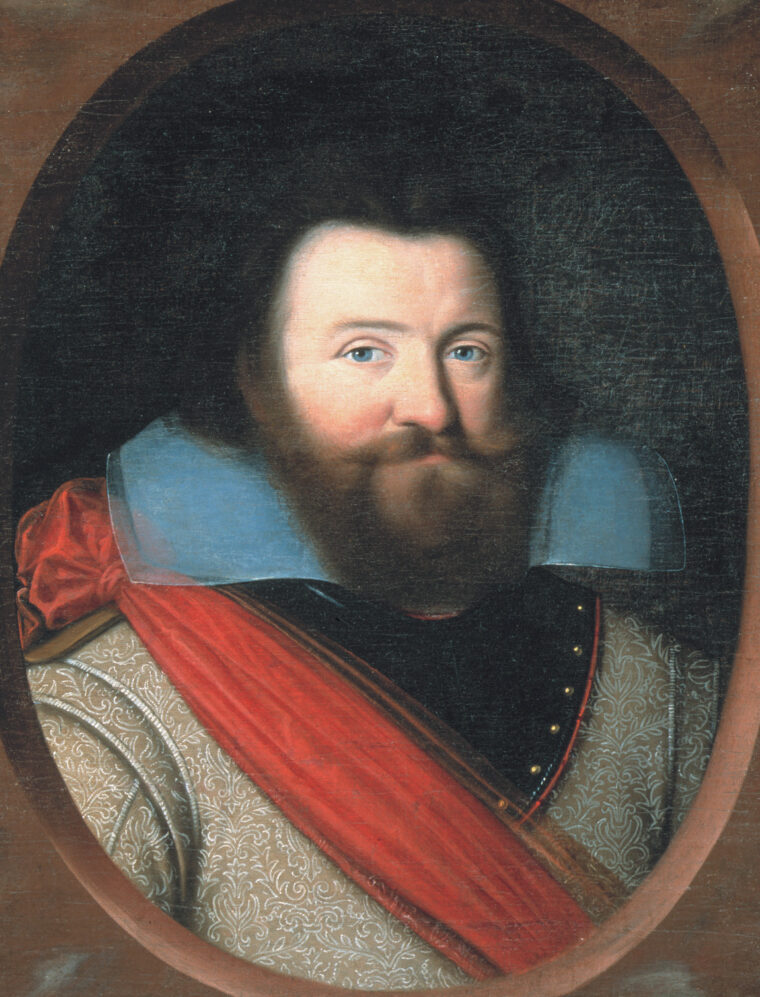
Smith’s commanding presence was the glue that kept the colony together. He was forced to return to England, however, after being seriously injured in a gunpowder explosion. But as he departed he could take pride in his accomplishments, including a strongly “palisadoed” Jamestown “containing some 50 or 60 houses, as well as five or six other forts and plantations” scattered about the region. The colony was moderately prosperous, but it all began to unravel soon after Smith was gone.
Without Smith’s strong leadership discipline grew lax and martial exercises were virtually abandoned. A colonist ruefully admitted that “the Indians no sooner understood that Smith was gone, but they all revolted and did spoile and murther [murder] all they encountered.” It was a nightmare, a recurrence of those terrible first weeks in 1607. Once again, colonists were ambushed and killed, and as supplies dwindled the specter of famine reappeared. Powhatan scented weakness and was quick to make the most of his opportunity. The wily old chief invited Captain John Ratcliffe and 30 colonists to trade. Once they were in his power, Powhatan had them killed. One boy named Henry Spelman was saved by the intercession of Powhatan’s daughter, the celebrated Pocahontas. Only one other person, a colonist named Jeffrey Shortridge, escaped to tell the tale.
This was the “Starving Time” winter of 1609-1610, where some famished wretches even resorted to cannibalism in a desperate bid to survive. The Indians without and starvation within nearly wiped out the colony. When a relief expedition arrived, only 60 ragged “scarecrows” remained out of the original 500 Smith left the year before. The colony was almost abandoned, but a second expedition under Sir Thomas West, Lord De La Warr, came in the proverbial nick of time.
De La Warr was a tough old soldier who had been sent out specifically to impose a military regime on lax Virginia colonists. “Lawes Divine, Morall and Martial” was a blueprint for action, and the colonists were expected to obey its precepts to the letter.
The colonists formed companies of 50 men each, commanded by a captain. Because they were citizen-militia and not professional soldiers, they were not expected to be under arms at all times. A kind of rotation system was set up by which one company would be on duty fully armed and armored while the other colonists sowed, reaped, and did all the other necessary things for Jamestown’s survival.
Once the settlers were deemed sufficiently trained, it was time to go over to the offensive. The Paspehegh tribe had been a thorn in the colony’s side since the earliest days—it was time to remove that thorn. Captain George Percy, one of the few survivors from Jamestown’s founding, was given the assignment to raid the principal Paspehegh town. He was given 70 picked men and some trusted lieutenants to perform the task, whose main objective was revenge pure and simple. Orders were given to take no prisoners.
The Percy expedition departed Jamestown on August 9, 1610, the soldiers crowded into two boats. They had an Indian prisoner to “guide” them and, when he tried to throw them off the scent, Percy bullied and pummeled him until he cooperated. The English landed about three miles from the town, forming up into files headed by a captain or lieutenant. Percy gave orders that each file was to surround the village, but not to attack until he came up with the colors and gave a signal.
Percy came up with the colors—a flag that was both for display and also a rallying symbol—and had Captain William West fire a pistol shot. At this signal the English troops fell on the unsuspecting village, killing 15 or 16 and putting the rest to flight. Percy ordered his drummer to beat a rallying signal that called all soldiers to the colors. Once assembled, the men were organized into parties to complete the destruction of the Indian town. Sword in one hand, flaming brands in the other, the English fanned out into the now-deserted village.
Bark-covered Indian dwellings were put to the torch, and soon orange-yellow flames greedily consumed all in their path. One lieutenant brought in the Paspehegh “queen” (these Indians had female chiefs as well) and her two children, as well as one Indian man. Percy was unhappy that the officer disobeyed orders and had the Indian man decapitated at once. The other prisoners were brought back to the boats and the expedition started back to Jamestown.
There were “murmurs” about the taking of prisoners, and it was decided the queen’s children would be killed. The unfortunate youngsters were thrown in the water, the soldiers “shooting their brains out” then and there. Percy tried to save the Indian “queen,” but she was later executed. Attitudes had hardened, and massacre had spawned countermassacre in an unending cycle of revenge.
The raids continued until 1614, when Powhatan’s beloved daughter Pocahontas was taken hostage. The great chief made a “firme peace,” and Pocahontas married English settler John Rolfe. This was not merely the union of a man and a woman, but the symbolic union of two races and disparate cultures. It was not to last, but gave Virginia about eight years of relative peace.
The early Jamestown period resulted in the foundation of an American military tradition, a tradition that stressed a citizen-soldier militia over a professional army. It also established a way of dealing with native tribes in times of war, a technique that was going to be used again and again over the next 300 years. Since the Indians were hard to defeat by conventional means, the only way to attack them was to locate and destroy their towns and villages.
The Continental Army brought the powerful Iroquois League low during the American Revolution by cutting a swath of destruction though their upper New York State heartland. Lieutenant Colonel George Armstrong Custer and his 7th Cavalry gained fame and sparked controversy by destroying a Cheyenne village on the banks of the Washita. The early Jamestown years had established a precedent.

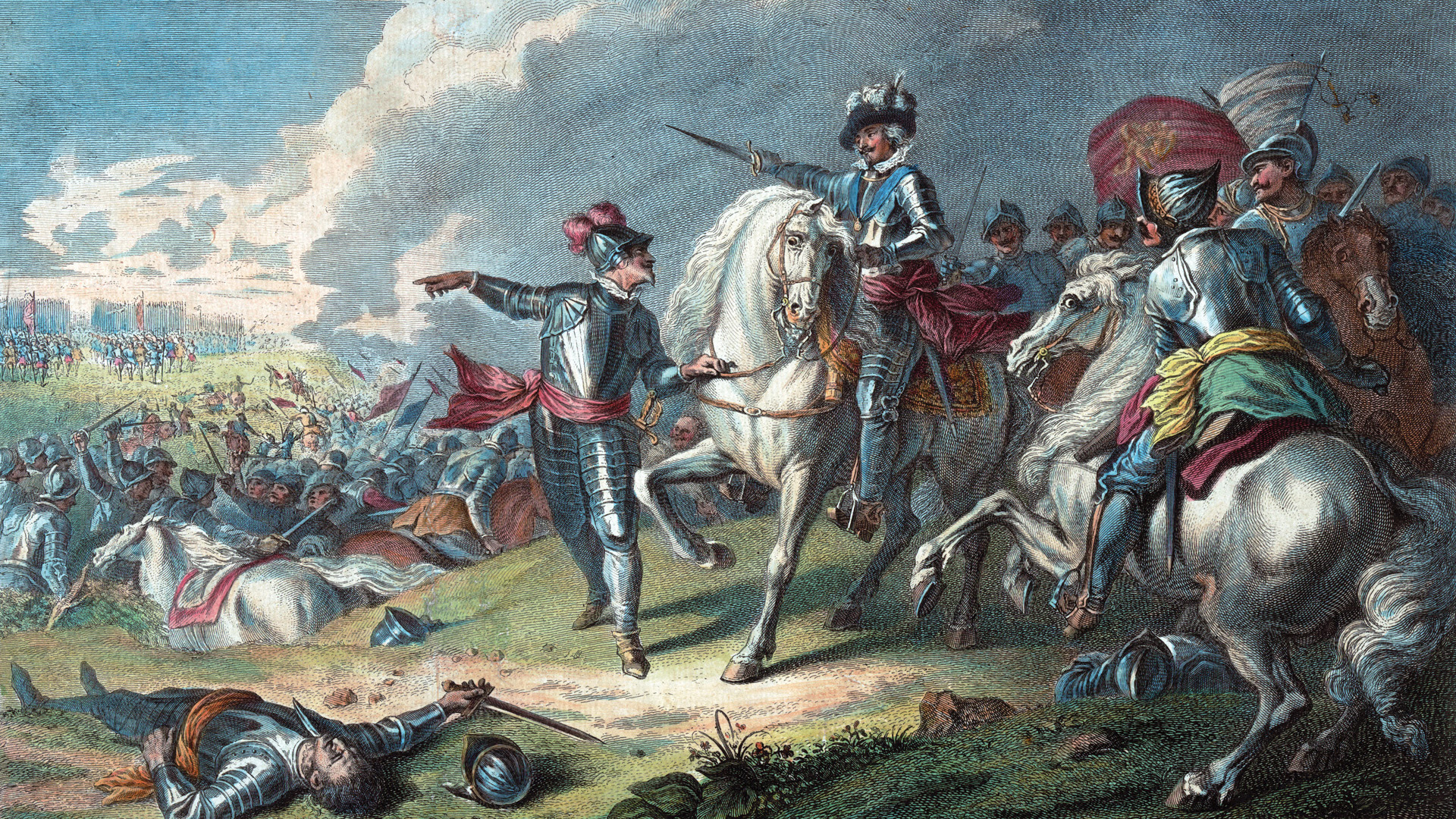
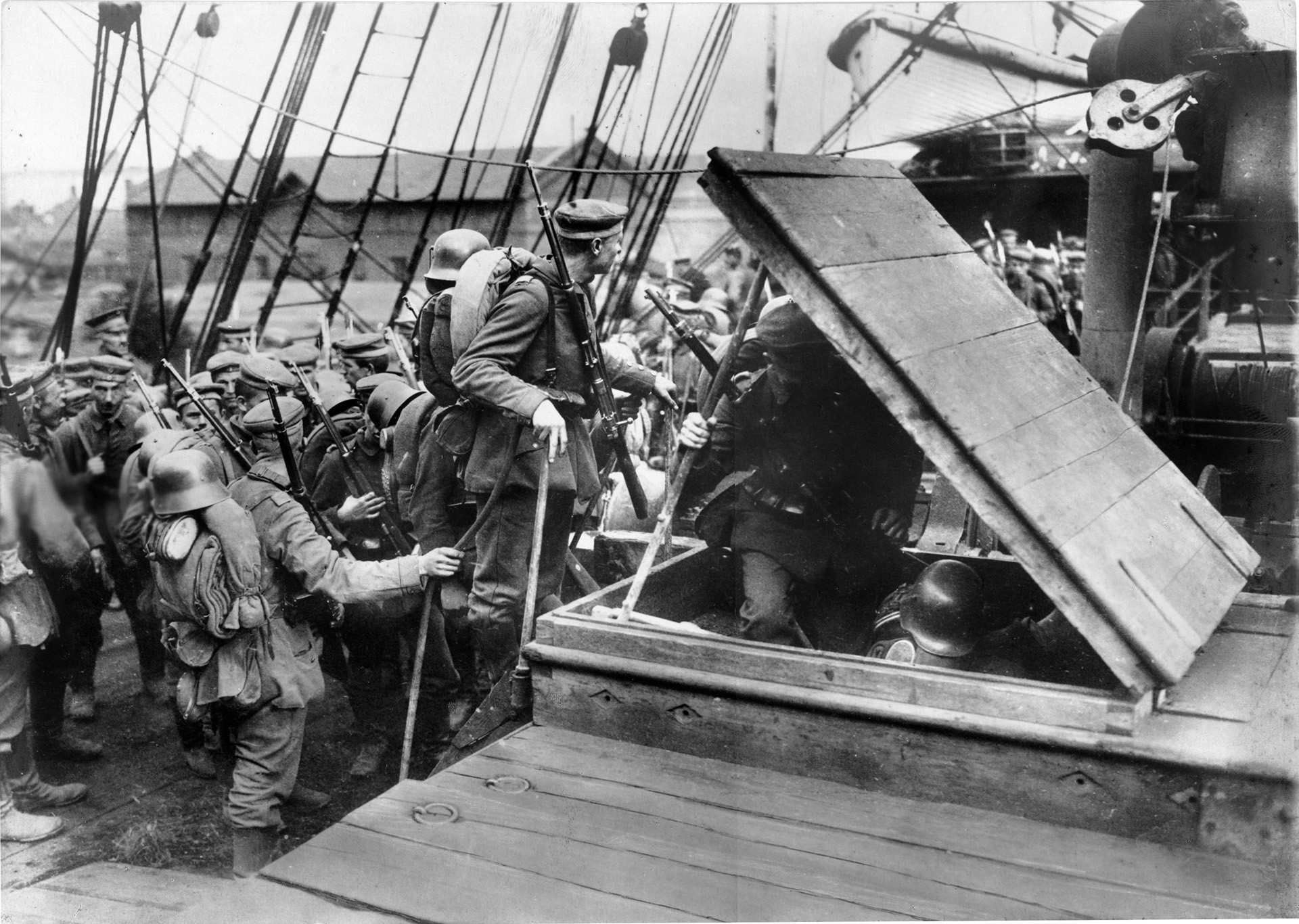
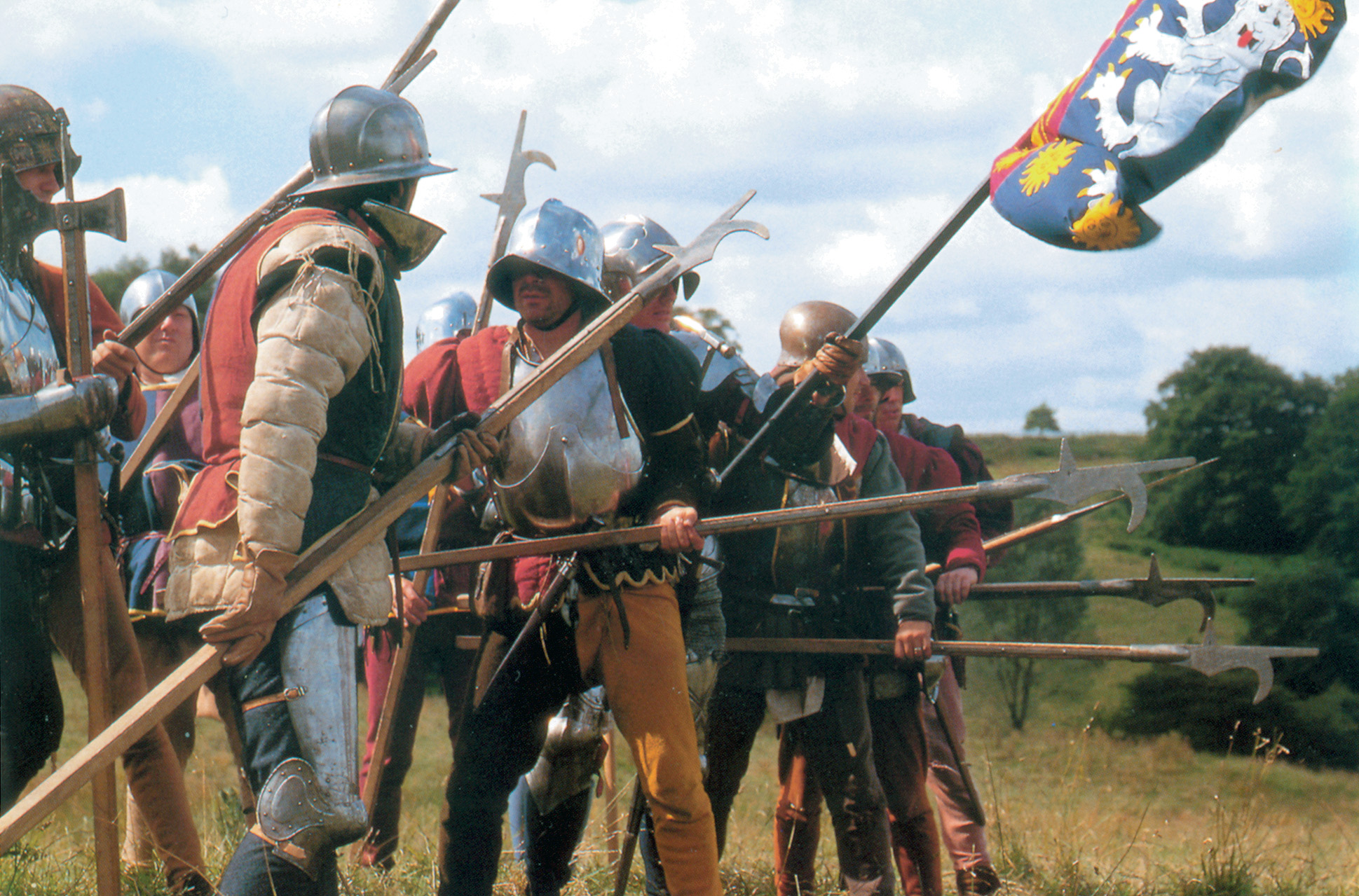
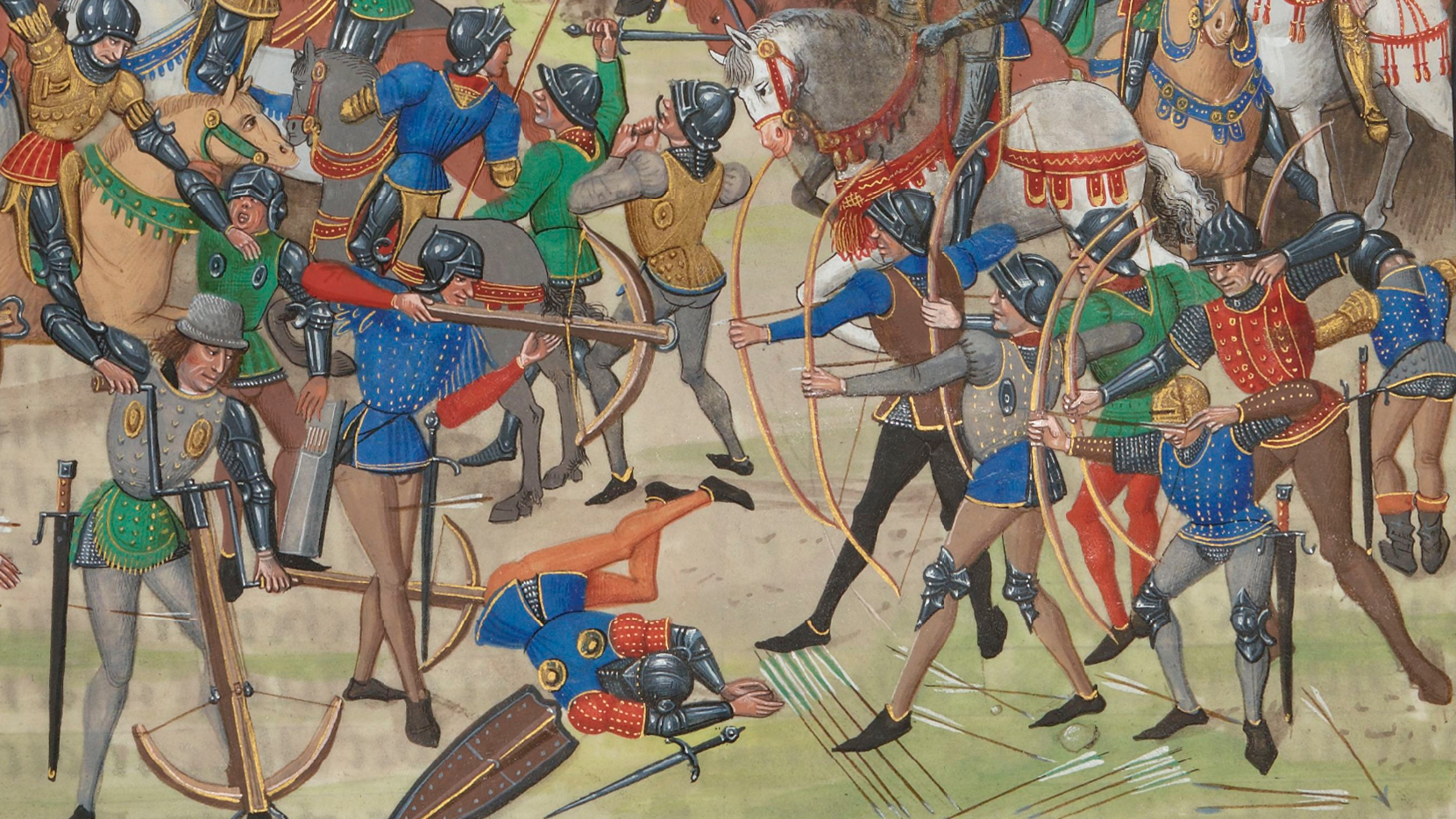
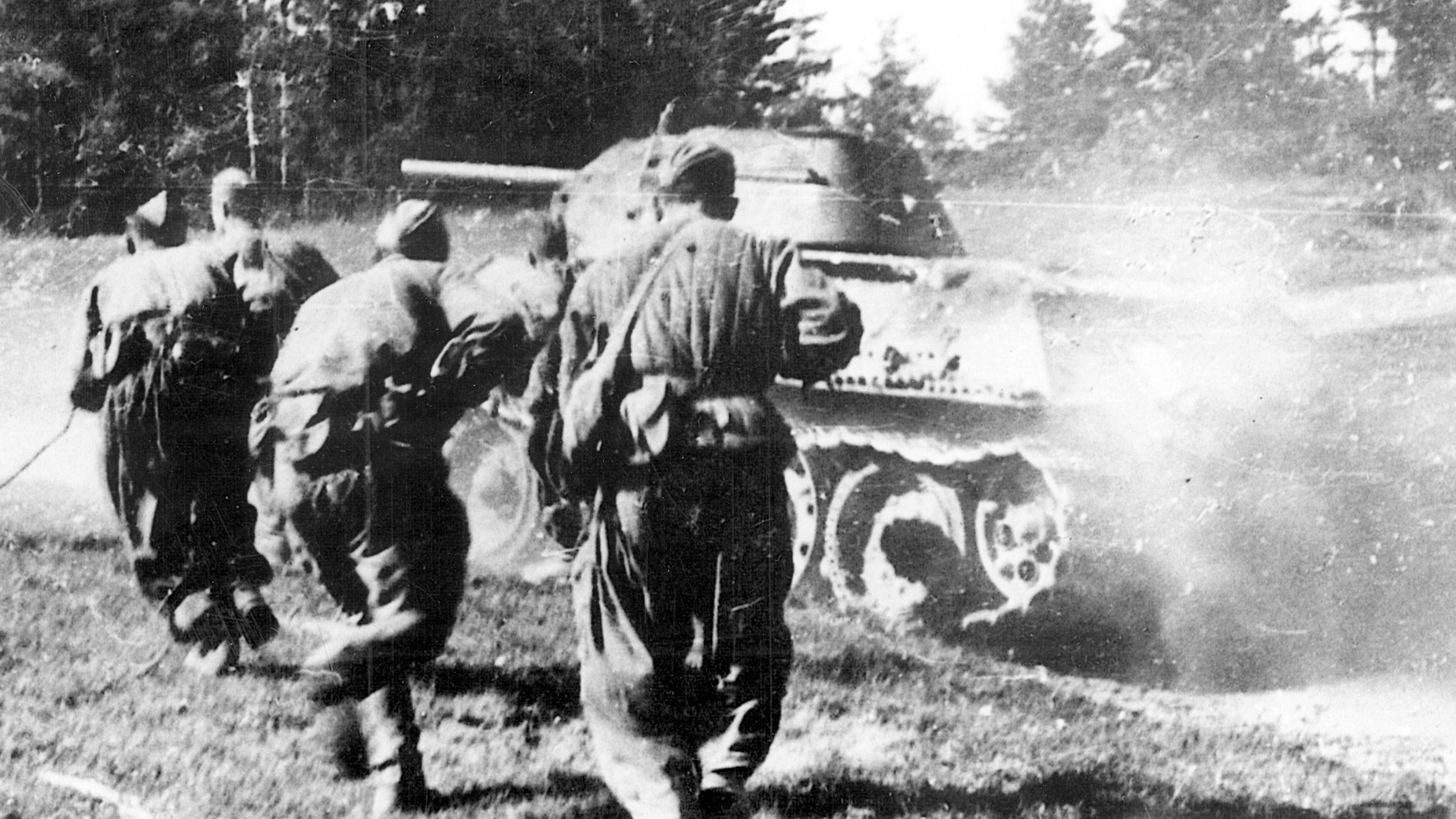
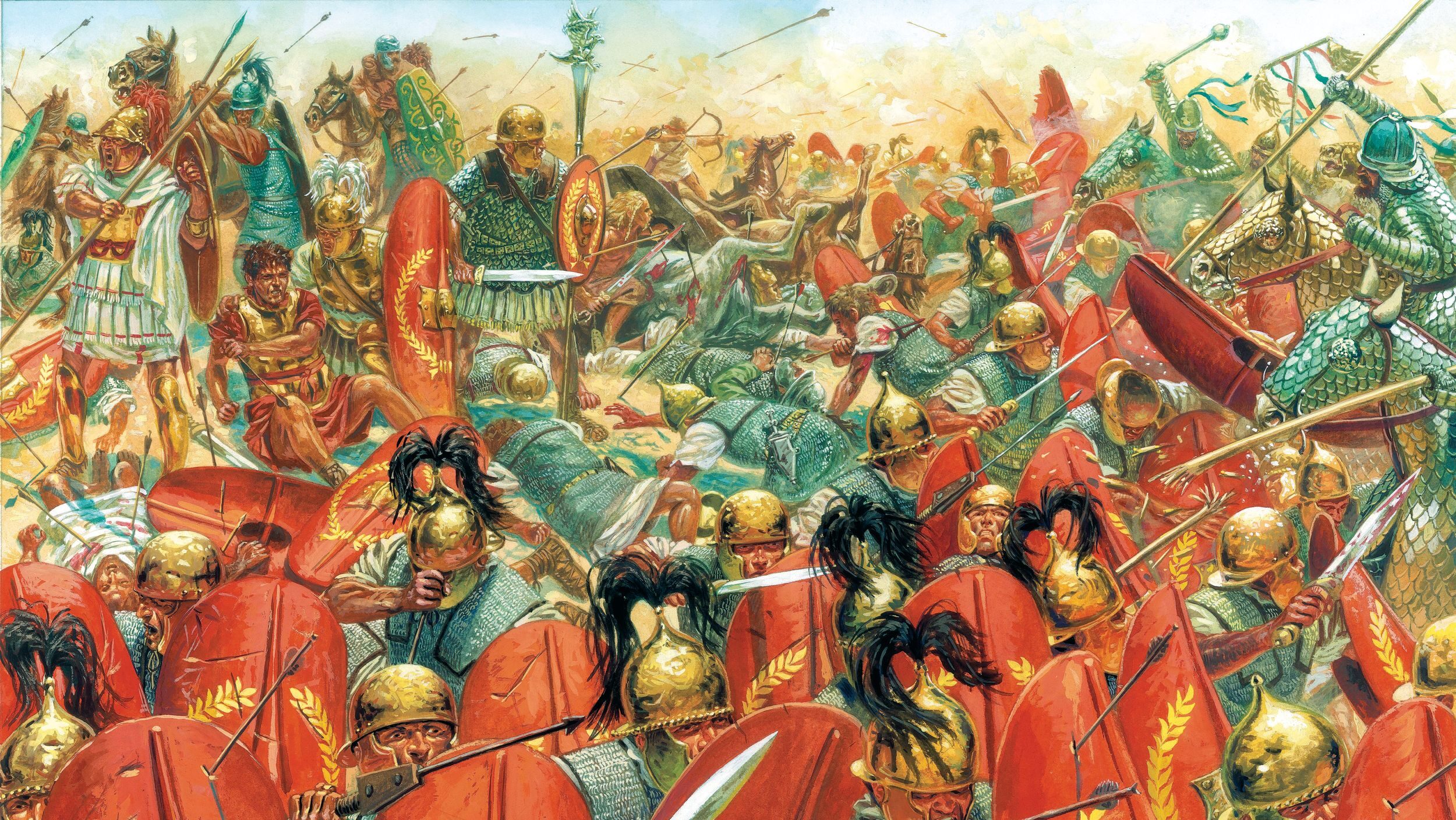
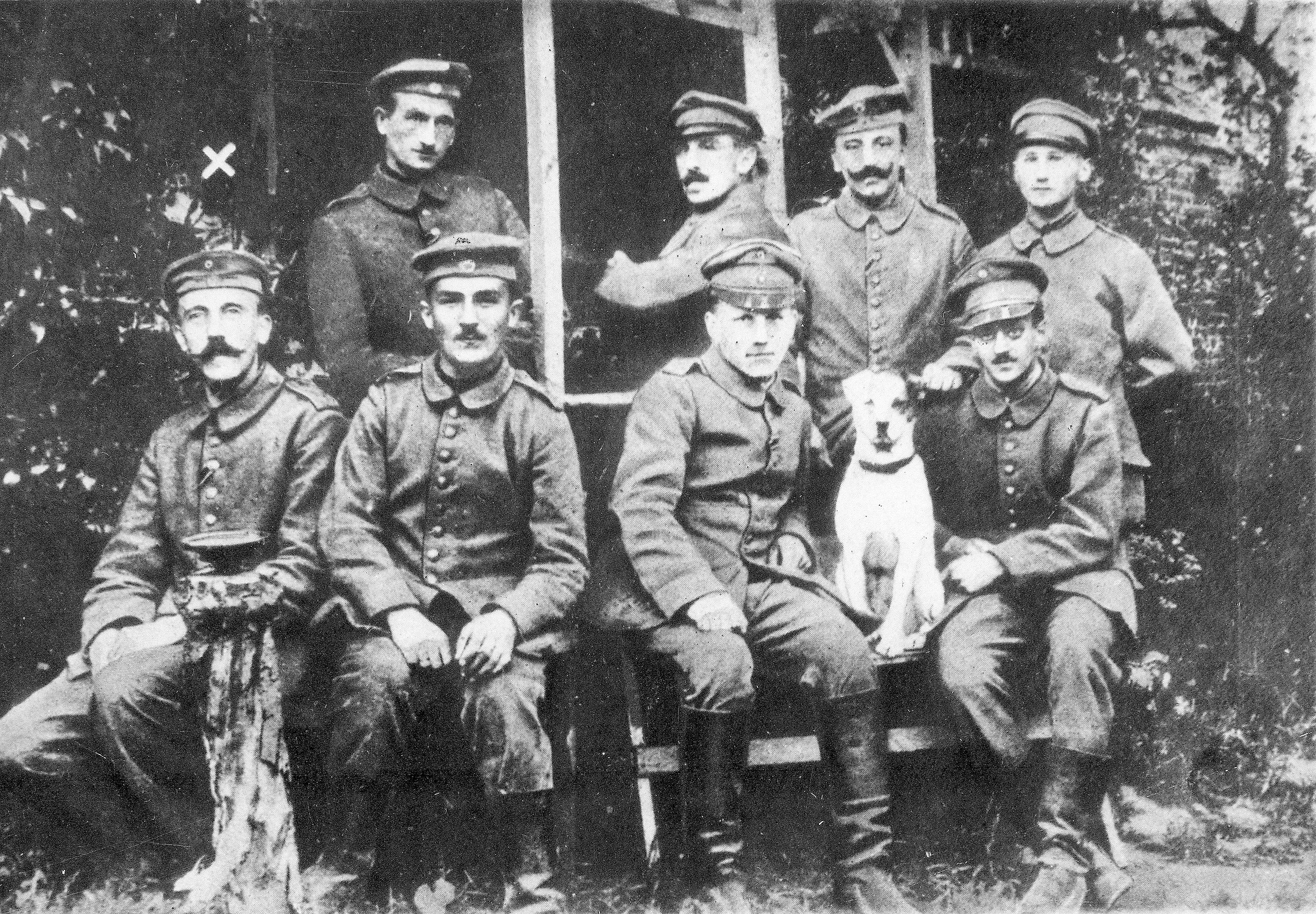
Join The Conversation
Comments
View All Comments